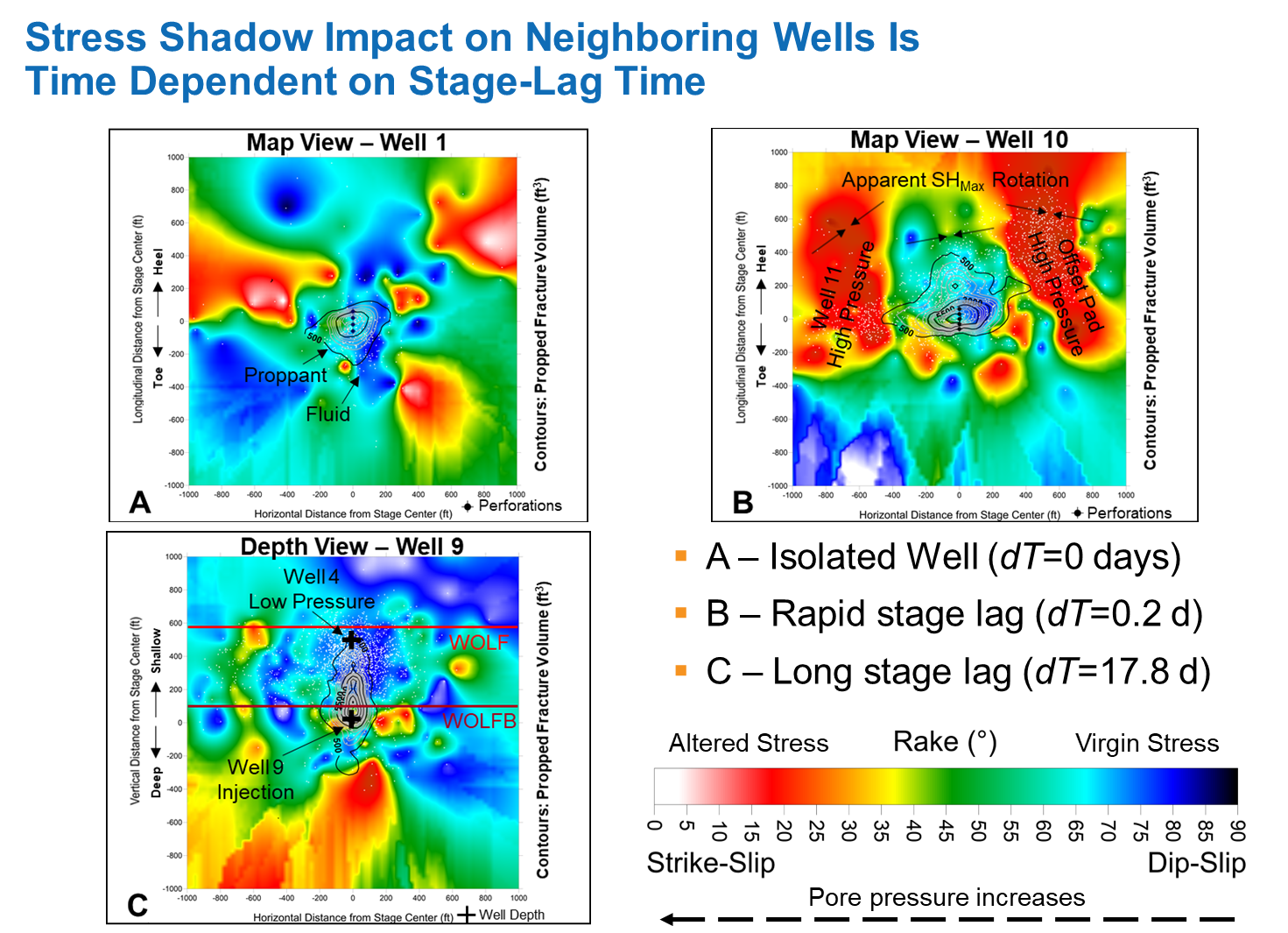Online Presentation - you must register to receive access information
NOTE: You must login to register
Presenter: Jon McKenna, Ph.D. Geological Engineer, MicroSeismic, Inc.
Multi-stage, multi-well completions cause pore-pressures to increase around each stage treated, compound from earlier offset treatment stages, then dissipate as the injected fluid leaks off into the rock formation. Local stress changes illuminated by microseismic focal mechanisms can be used to create maps of high and low pore-pressures which, in turn, can be used to guide a dynamic slurry propagation model and estimate fluid and proppant distribution from the injection. Injected slurry volumes respond to these pore-pressure changes dependent upon lag time from previously treated stages.
An example is presented from a multi-stage, multi-well hydraulic stimulation in the Wolfcamp Formation located in Southeast New Mexico. In this location, previous researchers have identified that a normal-faulting stress regime exists with maximum horizontal stress (SHmax) oriented between N75°E and N83°E with intermediate horizontal stress anisotropy (Lund Snee and Zoback, 2017). Results from this study shows that SHmax=N80°E and stress anisotropy, ?=0.36 in the virgin stress state. During hydraulic stimulation horizontal stress anisotropy is reduced (?=0.33) due to stress shadowing and SHmax rotates ~+/- 24°. Increased pore-pressures from previous treatments remain elevated for ~7 days confining fluid distribution to near the well on ensuing stages. Sufficient pressure dissipates after leakoff providing opportunity for the fluid to propagate into previously opened fractures. Pore-pressure highs can be identified using microseismic hypocenters fitting an altered stress state which differs from events fitting the background unpressured virgin stress state. Since injected fluid migrates toward low pressures and away from highs, we suggest that virgin stress events can be used to guide injected slurry volumes including proppant.

Figure 1: Contours show modeled proppant which mimics normal rake (cool colors). All well-stages stacked, referenced to stage center. Image colored by rake, events white. (A) Well 1 treated in isolation (dT =0), (B) Well 10 zippered with well 11 (dT =0.2 d), (C) Well 9 treated below well 4 after pore pressure dissipates (dT =17.8 d)
Presenter Biography: Jon McKenna, Ph.D. Geological Engineer, MicroSeismic, Inc.
Presenter Biography: Jon McKenna, Ph.D. Geological Engineer, MicroSeismic, Inc.
Jon McKenna is a geological engineer at MicroSeismic, Inc. His work relies on microseismic measurements during hydraulic stimulation to quantify dynamic stress changes in the reservoir and develops accurate fracture models to simulate proppant placement and forecast production. He holds a B.S. and a M.S. from the University of Georgia in Geology and Geophysics, respectively, and a Ph.D. from the Colorado School of Mines in Geological Engineering. He has over 20 years of engineering geology experience.
Dr. McKenna has three patents in the field, over 50 publications in conference proceedings, trade journals, and research reports and has given numerous invited talks at, geophysical associations, colleges, and universities. He is a member of SEG, AAPG, and SPE.
**This presentation will be in a fully commercial format, to deliver information on the presenting company’s service or product. The GSH is not responsible for the content presented, nor does it endorse, warrant, or otherwise validate the material/service or product presented.